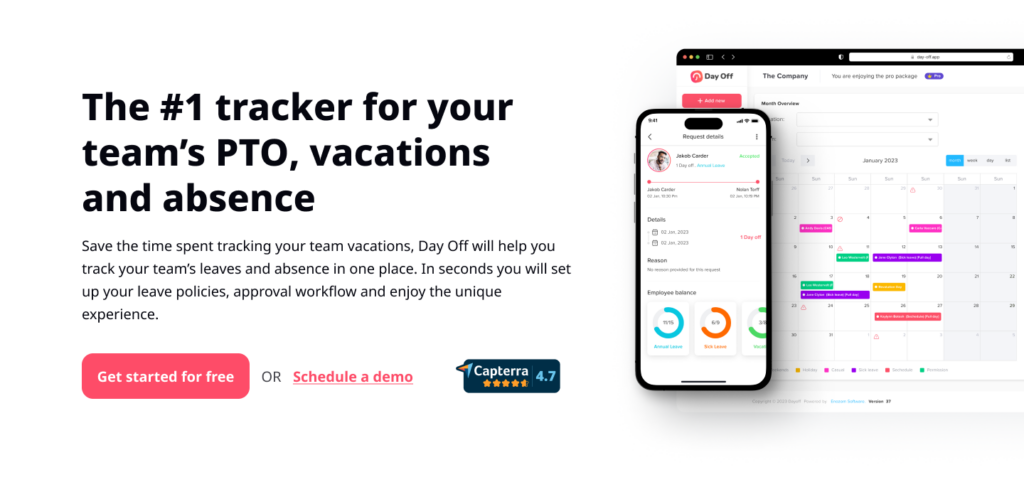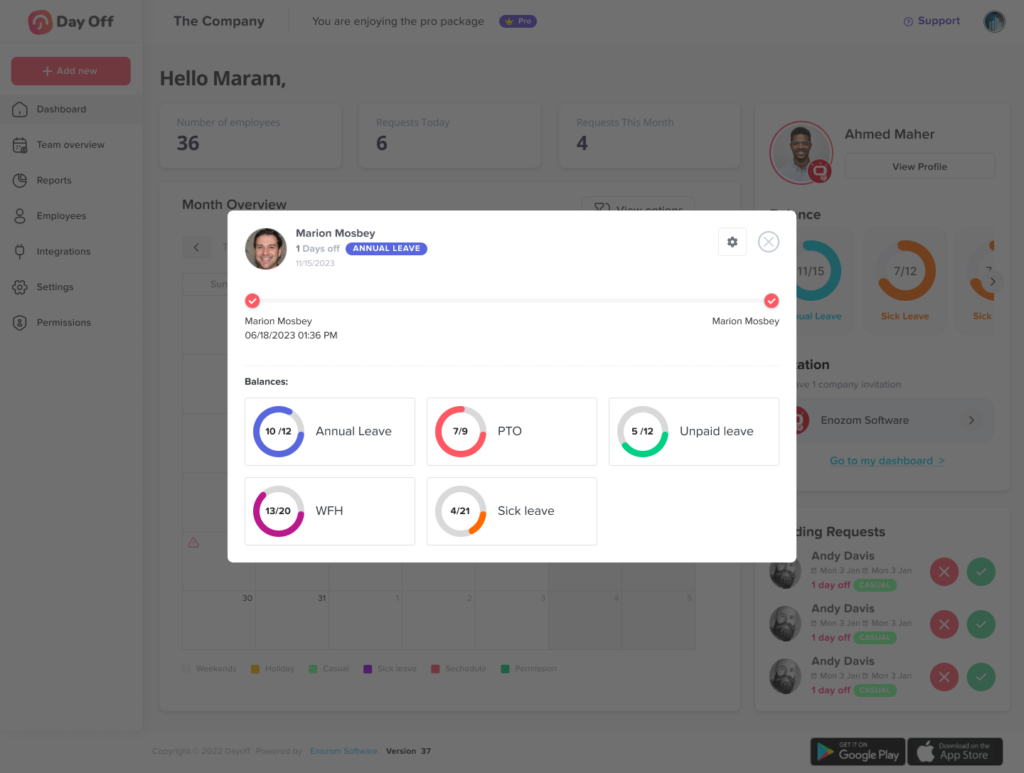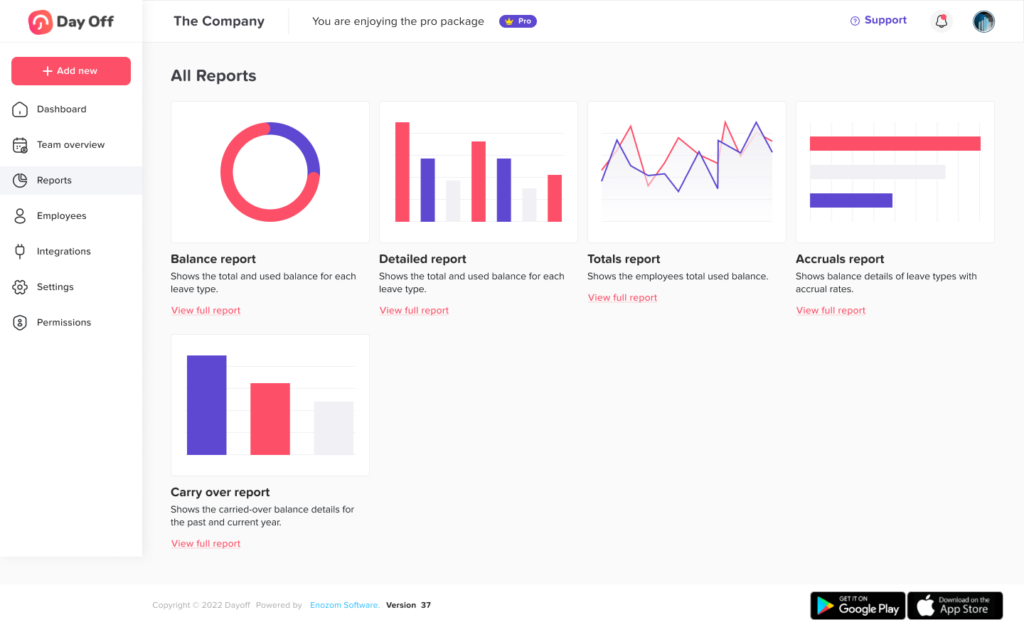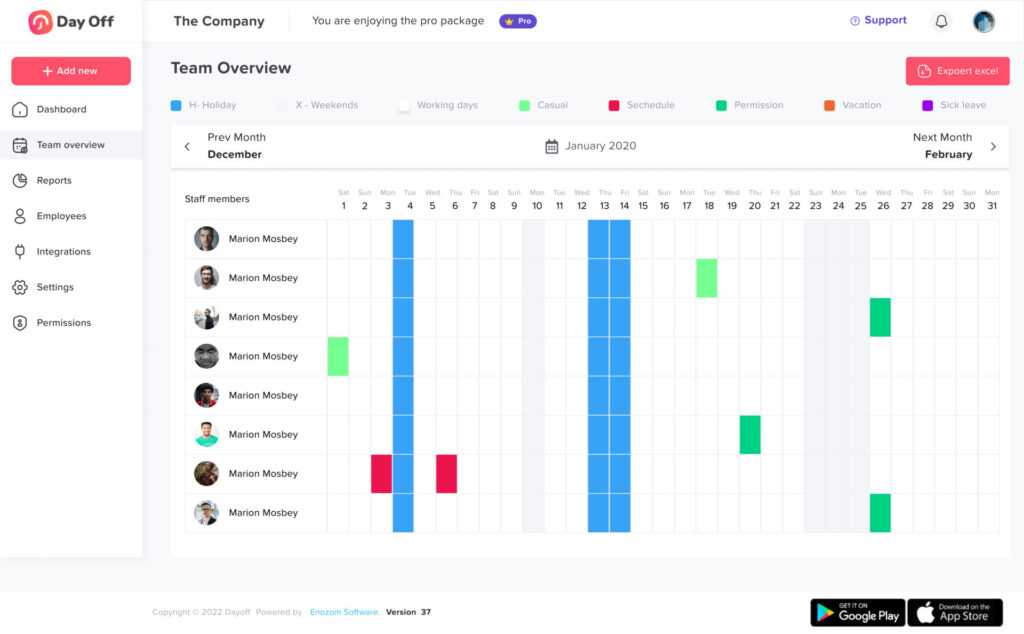Paid Time Off (PTO) has moved from a back-office policy to a front-of-funnel recruiting lever. Candidates increasingly compare offers by looking at time-off flexibility, accrual transparency, and manager norms around actually taking leave. Leading employers treat PTO as part of their Employee Value Proposition (EVP), not just a benefit, but a signal of trust, well-being, and sustainable performance.
What top teams do:
-
Paid Time Off Optimization: Use data to balance staffing coverage with real utilization, ensuring teams can take time off without burdening colleagues. PTOO aligns accruals, blackout dates, and project calendars so time off is both encouraged and operationally feasible.
-
Flexible models: Offer hybrid options, banked PTO, floating holidays, mental-health days, and volunteer days. This respects diverse needs (parents, caregivers, global teams across observances).
-
Utilization norms: Make “PTO is meant to be used” explicit. Track usage equity to avoid silent penalties where only some feel free to unplug.
-
Transparent accruals: Share balances in real time during onboarding and probation, and clarify carryover, cash-out, and blackout policies upfront.
-
Manager enablement: Train leaders to plan coverage, approve requests quickly, and model healthy time-off behavior.
Virtual Recruitment: A New Normal
The rise of remote work and global digital transformation has made virtual recruitment an essential part of modern hiring. What began as a necessity during the pandemic has now become a strategic standard for global companies.
Organizations are increasingly relying on video interviews, digital career fairs, and remote onboarding to connect with candidates across geographies. Tools such as Zoom, Microsoft Teams, and specialized HR platforms enable seamless communication, assessments, and cultural alignment, all online.
For instance, Google and Microsoft quickly adapted to virtual hiring models, integrating AI-driven scheduling and video evaluation tools to streamline the process. The benefits extend beyond cost saving, virtual recruitment also reduces time-to-hire, broadens the talent pool, and supports diversity and inclusion goals by eliminating geographic barriers.
However, successful virtual recruitment requires HR professionals to rethink candidate assessment, focusing on online communication cues, digital body language, and soft-skill evaluation in virtual environments.
Artificial Intelligence: Transforming Hiring
Artificial Intelligence (AI) is revolutionizing recruitment by automating routine tasks and enhancing decision-making accuracy. AI tools can screen resumes, analyze candidate speech patterns, predict job performance, and even recommend optimal job matches based on behavioral data.
For example, IBM’s AI-powered HR tool, Watson, assists in identifying the best-fit candidates by analyzing both technical and soft skills from interview transcripts and CVs. AI can also mitigate bias (if properly designed), increase efficiency, and free HR teams to focus on strategic human interaction rather than administrative work.
That said, AI should complement, not replace, human judgment. Recruiters must ensure that AI-driven processes are ethical, transparent, and unbiased, maintaining the human touch that defines meaningful hiring experiences.
Employer Branding: Attracting the Best
A powerful employer brand is a magnet for talent. It defines how potential candidates perceive your company, not just as an employer, but as a place to grow and thrive.
Strong employer branding involves authentic storytelling, social proof, and employee advocacy. Companies like Enozom and HubSpot leverage their career pages and social platforms to showcase employee success stories, behind-the-scenes videos, and testimonials that reflect their values and work culture.
A consistent, engaging employer brand improves application quality, reduces recruitment costs, and enhances employee retention. In today’s transparent job market, where candidates research companies on Glassdoor, LinkedIn, and social media, a strong reputation is more valuable than ever.
Diversity Hiring: Beyond Checking Boxes
Diversity hiring has evolved beyond meeting quotas; it’s now about building stronger, more innovative organizations. Research shows that diverse teams outperform homogeneous ones in creativity, problem-solving, and financial performance.
Companies like Accenture are pioneers in this area, implementing structured programs to attract underrepresented groups, revising job descriptions to eliminate biased language, and using diverse interview panels to promote fairness.
To go beyond compliance, organizations must create a culture of inclusion, ensuring that diversity is reflected at every level, from recruitment to retention and promotion. Real inclusion starts when everyone, regardless of background, feels seen, heard, and valued.
Candidate Experience: The Heart of Recruitment
In a candidate-driven market, experience is everything. Every interaction, from job application to final interview, shapes how candidates perceive your company. A poor experience can damage your employer brand, while a great one can turn candidates into brand advocates.
Salesforce sets a high standard with personalized communication, timely feedback, and transparency throughout the process. Even when candidates aren’t selected, they leave with a positive impression of the company’s professionalism and empathy.
HR teams should map the candidate journey, identify friction points (like long response times or unclear communication), and use automation tools to personalize engagement without losing the human element.
Social Media Recruiting: Leveraging Digital Platforms
Social media is now a strategic recruitment channel rather than just a marketing tool. Platforms like LinkedIn, Instagram, and TikTok allow companies to connect directly with potential candidates, showcase their culture, and promote openings in engaging ways.
L’Oréal, for example, uses LinkedIn and Instagram to share “Day in the Life” stories and videos featuring real employees. This approach humanizes the brand and helps job seekers visualize themselves as part of the company.
Social recruiting works best when companies engage authentically, respond to inquiries, and create content that resonates with the target audience, not just corporate announcements.
Recruitment Analytics: Data-Driven Decisions
Data analytics is transforming HR decision-making. Through recruitment metrics like time-to-hire, source effectiveness, and candidate satisfaction, companies can identify what’s working and what isn’t.
Google is a leader in data-driven recruitment. The company continuously analyzes hiring outcomes, interview performance, and onboarding success to refine its hiring models.
By leveraging analytics, recruiters can predict talent needs, reduce bias, and optimize recruitment ROI, turning hiring into a science rather than guesswork.
Skills-Based Hiring: Shifting the Focus
The traditional focus on degrees and titles is fading as employers realize that skills, not credentials, drive performance. Skills-based hiring emphasizes what candidates can do, not where they studied or worked previously.
IBM exemplifies this shift, prioritizing technical ability and practical experience over formal education. This trend not only broadens access to talent but also supports diversity, inclusion, and innovation, as it opens doors for self-taught professionals and career changers.
Flexible Work Options: The New Incentive
Work flexibility is no longer a perk, it’s an expectation. Hybrid and remote models have redefined how employees view work-life balance and productivity.
Companies like Twitter offer full remote work options, allowing employees to design their schedules around life priorities. This flexibility attracts top talent seeking autonomy and boosts engagement and retention.
Employers embracing flexible work arrangements gain access to a global talent pool, reduced overhead costs, and improved employee well-being, all critical advantages in a competitive market.
Recruitment Marketing: A Holistic Approach
Recruitment marketing applies branding and marketing principles to attract candidates. It includes targeted ads, blog content, email campaigns, and storytelling that highlight why your company is a great place to work.
HubSpot exemplifies this approach by promoting its culture through engaging social media posts, employee blogs, and videos that align with its values. By merging marketing and recruitment, companies can reach passive candidates and create lasting brand appeal.
Passive Candidate Recruitment
Passive candidates, those not actively looking for a job, often represent the highest-performing potential hires. Attracting them requires a relationship-driven approach focused on trust and opportunity.
Amazon engages passive candidates through personalized outreach, professional communities, and targeted events. The goal isn’t immediate hiring, it’s long-term engagement that converts interest into opportunity when the time is right.
Collaborative Hiring: Team-Based Approach
Collaborative hiring involves multiple stakeholders in the recruitment process, ensuring diverse perspectives and better cultural alignment.
Atlassian incorporates team-based interviews, where candidates meet future colleagues and experience real collaboration scenarios. This process strengthens decision-making and enhances the candidate’s understanding of the company culture.
Internship Programs: Building a Talent Pipeline
Internships serve as a strategic recruitment pipeline, enabling organizations to assess potential talent early and offer hands-on experience to future professionals.
Google’s internship program is a prime example, it provides meaningful projects, mentorship, and pathways to full-time employment. Such programs enhance brand loyalty, ensure cultural fit, and create a sustainable flow of qualified future hires.
Compliance in Recruitment
Legal compliance remains a foundational aspect of modern recruitment. Employers must ensure adherence to labor laws, equal opportunity policies, and data protection regulations (like GDPR).
Regular audits, updated job descriptions, and structured interview processes help prevent discrimination and maintain transparency. Noncompliance not only risks legal penalties but also damages organizational reputation.
The Role of HR in Onboarding
Recruitment doesn’t end with an offer letter, it culminates in successful onboarding. The onboarding phase defines how well new hires integrate into the company and whether they remain long-term.
Zappos excels at onboarding with immersive culture training and mentorship programs. This investment boosts retention, engagement, and overall job satisfaction.
The Strategic Future of Recruitment
The future of recruitment lies in strategic synergy between technology, empathy, and data. HR leaders must combine human insight with digital efficiency, ensuring fairness, engagement, and purpose in every hire.
Tomorrow’s recruitment will rely on predictive analytics, AI-driven personalization, and deeper candidate relationships, creating not just workforces, but communities of motivated and empowered talent.
Frequently Asked Questions (FAQ)
What is the biggest trend shaping recruitment today?
The most significant trend is the integration of technology and human insight, combining AI-driven tools with empathetic, relationship-based recruitment. This hybrid approach ensures efficiency while preserving the human touch.
How has virtual recruitment changed the hiring process?
Virtual recruitment has eliminated geographical barriers, making it easier to hire globally. However, it also requires recruiters to develop new skills in virtual interviewing, digital communication, and remote onboarding to maintain engagement and authenticity.
Why is employer branding so important now?
In a competitive job market, candidates evaluate companies just as much as companies evaluate them. A strong employer brand builds trust, reputation, and desirability, making it easier to attract top talent without excessive recruitment costs.
How can companies ensure diversity in recruitment?
Organizations must go beyond compliance by implementing inclusive job descriptions, diverse hiring panels, and bias-free AI tools. Partnering with professional diversity networks and tracking inclusion metrics can further strengthen results.
What is recruitment marketing, and how does it work?
Recruitment marketing uses advertising, storytelling, and digital campaigns to promote a company’s culture and career opportunities. It attracts both active and passive candidates by positioning the organization as an employer of choice.
How does AI improve the recruitment process?
AI streamlines screening, reduces bias, and helps predict candidate success. It allows recruiters to process large volumes of applications efficiently, focusing their energy on personalized engagement and cultural fit.
What role does candidate experience play in recruitment success?
A positive candidate experience builds trust and enhances employer reputation. Even candidates who don’t get hired may recommend or reapply if treated respectfully. Clear communication, timely feedback, and transparency are key.
Why is skills-based hiring becoming more popular?
Skills-based hiring allows companies to focus on capability rather than credentials, widening access to talent. This approach promotes diversity, innovation, and fairness by emphasizing what candidates can do, not where they studied.
How can data analytics enhance recruitment?
Recruitment analytics provide insights into sourcing effectiveness, hiring speed, and candidate quality. By analyzing trends, companies can make data-informed decisions that improve hiring efficiency and reduce costs.
How does social media impact recruitment?
Social media offers recruiters the ability to connect authentically with candidates, showcase company culture, and engage in two-way communication. It transforms recruitment from transactional to relational.
What are passive candidates, and why target them?
Passive candidates are skilled professionals not actively seeking jobs. Engaging them requires consistent branding and relationship-building, offering opportunities that align with their long-term goals.
How can flexible work options attract top talent?
Flexibility enhances work-life balance, attracting professionals who value autonomy and mental well-being. Companies offering remote or hybrid options often experience higher retention and satisfaction rates.
How important is onboarding in the recruitment process?
Onboarding is the bridge between hiring and retention. A structured, engaging onboarding program ensures new hires feel welcomed, supported, and aligned with company culture from day one.
What are the compliance risks in recruitment?
Noncompliance with employment or data protection laws can result in legal penalties, reputational harm, and employee distrust. Regular policy reviews and training ensure ethical, lawful recruitment practices.
What is the future of recruitment?
The future lies in AI-powered, inclusive, and experience-driven hiring. Companies that balance automation with authenticity, using data to enhance, not replace, human connection, will lead the next era of talent acquisition.
Conclusion
The recruitment landscape is in constant flux, reshaped by technology, globalization, and evolving candidate expectations. Success in this environment requires adaptability, creativity, and data-driven strategy.
By embracing trends such as AI integration, virtual hiring, diversity initiatives, and flexible work options, HR professionals can build recruitment systems that are both efficient and human-centered.
In essence, recruitment today is about creating meaningful connections between people, purpose, and potential. The organizations that invest in these forward-thinking strategies will not only attract the best talent but also cultivate workplaces that inspire excellence, loyalty, and long-term success.















